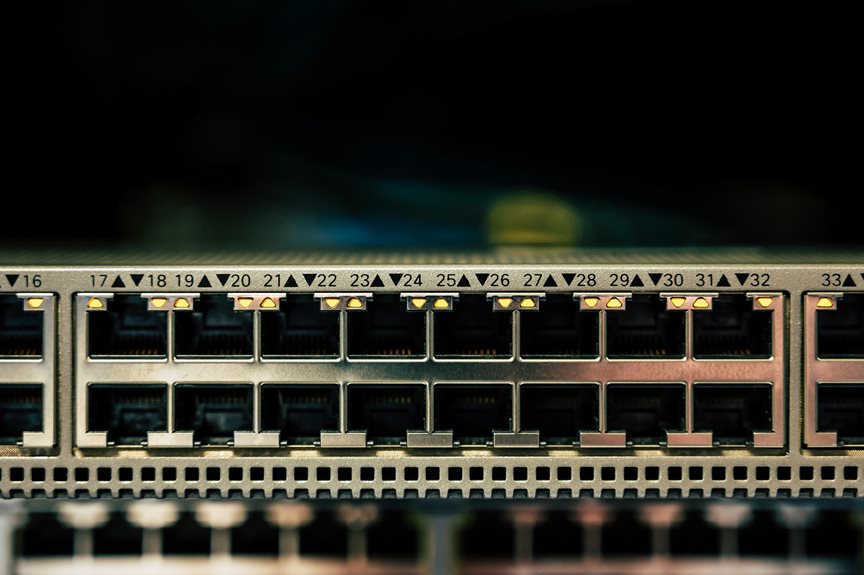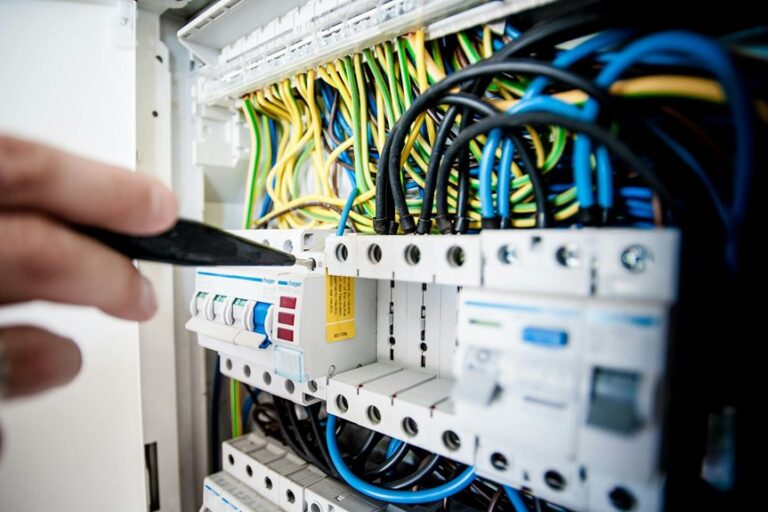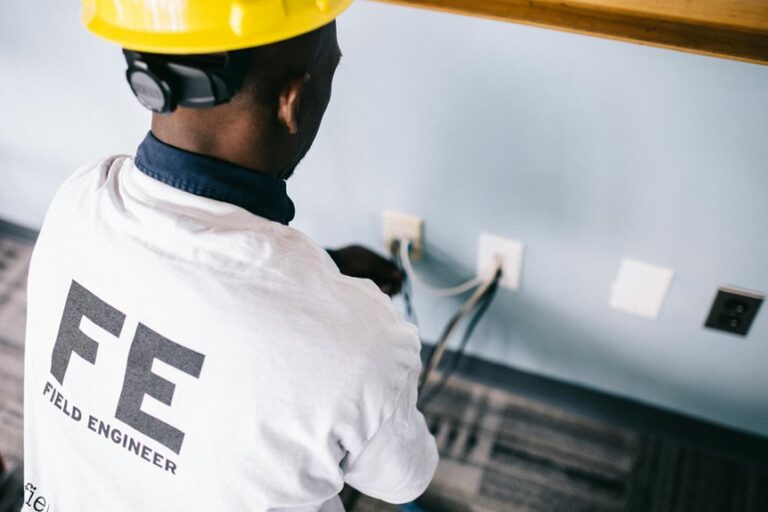Imagine you've just set up a small office with multiple computers and network devices, only to find that your internet connection drops intermittently. This situation often stems from improper electrical computer and network wiring, which can lead to signal loss and equipment failure. By understanding the fundamentals of wiring types, installation best practices, and the importance of cable management, you can prevent these issues. But what specific steps should you take to guarantee your network operates reliably and efficiently?
Understanding Electrical Wiring
Understanding electrical wiring is crucial for anyone looking to install or maintain electrical systems safely and effectively.
You'll need to familiarize yourself with the basic components, including wires, cables, connectors, and circuit breakers. Each of these elements plays a significant role in guaranteeing the system operates correctly and securely.
When dealing with electrical wiring, start by identifying the wiring types—such as single-strand, multi-strand, and shielded wiring—and their applications.
You'll also need to understand wire gauges, as they determine the amount of current a wire can safely carry. Remember that using the correct gauge can prevent overheating and potential fire hazards.
Next, learn about circuit configurations, including series and parallel circuits. Each configuration has its advantages and disadvantages, influencing how devices operate and how power is distributed.
Finally, familiarize yourself with local electrical codes and safety standards. These regulations not only guarantee compliance but also protect you from accidents or legal repercussions. Additionally, hiring a qualified electrician in Riverside can ensure your electrical installations are performed safely and up to code.
Basics of Network Wiring
When setting up a network, knowing the basics of network wiring is essential for guaranteeing reliable connectivity and efficient data transfer.
First, you need to choose the right cable type. The most common options include Ethernet cables, such as Cat5e, Cat6, and Cat6a. These cables vary in speed and distance capabilities, with higher categories supporting faster data rates.
Next, understand the wiring standards. T568A and T568B are the two primary wiring schemes used for Ethernet cables. While both standards achieve the same performance, you should stick to one standard throughout your installation to avoid confusion.
Pay attention to cable lengths; Ethernet cables can run up to 100 meters without signal degradation. For longer distances, consider using network switches or repeaters to maintain signal quality. Additionally, verify you're using proper connectors, like RJ45 plugs, which provide secure connections and prevent signal loss.
Lastly, plan your cable management carefully. Labeling cables and avoiding sharp bends will help maintain performance and simplify future troubleshooting.
Best Practices for Installation
Proper installation of network wiring is essential for guaranteeing ideal performance and reliability. To achieve a successful setup, you should follow these best practices:
1. Plan Your Layout: Before you start, create a detailed plan of your network layout. Consider the locations of devices and potential obstacles. This helps in choosing the right cable lengths and types, reducing waste and signal degradation.
2. Use Quality Materials: Invest in high-quality cables and connectors that meet your network's requirements. For instance, using CAT6 cables for gigabit connections can enhance performance considerably.
Confirm all components are compatible to avoid bottlenecks.
3. Maintain Proper Cable Management**: Organize your cables neatly to avoid tangling and potential damage**. Use cable ties and trays to keep everything tidy.
This not only improves aesthetics but also enhances airflow and reduces interference from electromagnetic sources.
Common Wiring Mistakes
One of the most common wiring mistakes that can undermine your network's performance is neglecting to account for cable lengths and types. Using the wrong type of cable or exceeding recommended lengths can lead to signal loss and increased latency. You'll want to guarantee you choose the right category of Ethernet cable, such as Cat5e or Cat6, based on your requirements. Additionally, relying on expert electricians can help ensure that your installation meets industry standards.
Here's a quick reference table to help identify common wiring mistakes:
| Mistake | Consequence | Solution |
|---|---|---|
| Using low-quality cables | Poor connection quality | Invest in high-quality cables |
| Exceeding cable length | Signal degradation | Follow length guidelines |
| Wrong connector type | Incompatibility | Match connectors to cables |
| Poor cable management | Interference | Organize and secure cables |
| Ignoring grounding | Electrical surges | Implement proper grounding |
Avoid these pitfalls by planning your network setup carefully. By selecting the appropriate cables, managing lengths, and maintaining organization, you'll enhance your network's reliability and efficiency. Each detail counts in guaranteeing your system runs smoothly.
Future Trends in Wiring
The landscape of electrical wiring is rapidly evolving, driven by advancements in technology and increasing demands for data transmission. As you look to the future, you'll notice several key trends shaping the wiring landscape.
- Smart Wiring Systems: These systems integrate advanced sensors and IoT technology, allowing for real-time monitoring and management. You can optimize energy efficiency and improve safety through smart wiring solutions.
- Increased Fiber Optic Usage: Fiber optics are becoming the standard for high-speed data transmission. Unlike copper, fiber offers greater bandwidth and distance capabilities, making it ideal for networks that require rapid data flow.
- Wireless Technology Integration: While traditional wiring remains essential, there's a noticeable shift toward wireless solutions. This trend minimizes clutter and enhances flexibility, letting you adapt your wiring setup with ease as your needs change.
Keeping an eye on these trends will help you stay ahead in a rapidly changing environment.
Adopting these innovations can lead to more efficient, reliable, and sustainable wiring solutions in your projects.
Conclusion
In summary, mastering electrical computer and network wiring is like wielding a conductor's baton, orchestrating seamless connectivity and communication among your devices. By following best practices and avoiding common mistakes, you can guarantee your setup performs at its peak. As you explore future trends like smart wiring and fiber optics, remember that a well-planned network is akin to a finely tuned machine—each component plays an essential role in achieving maximum efficiency and reliability.








